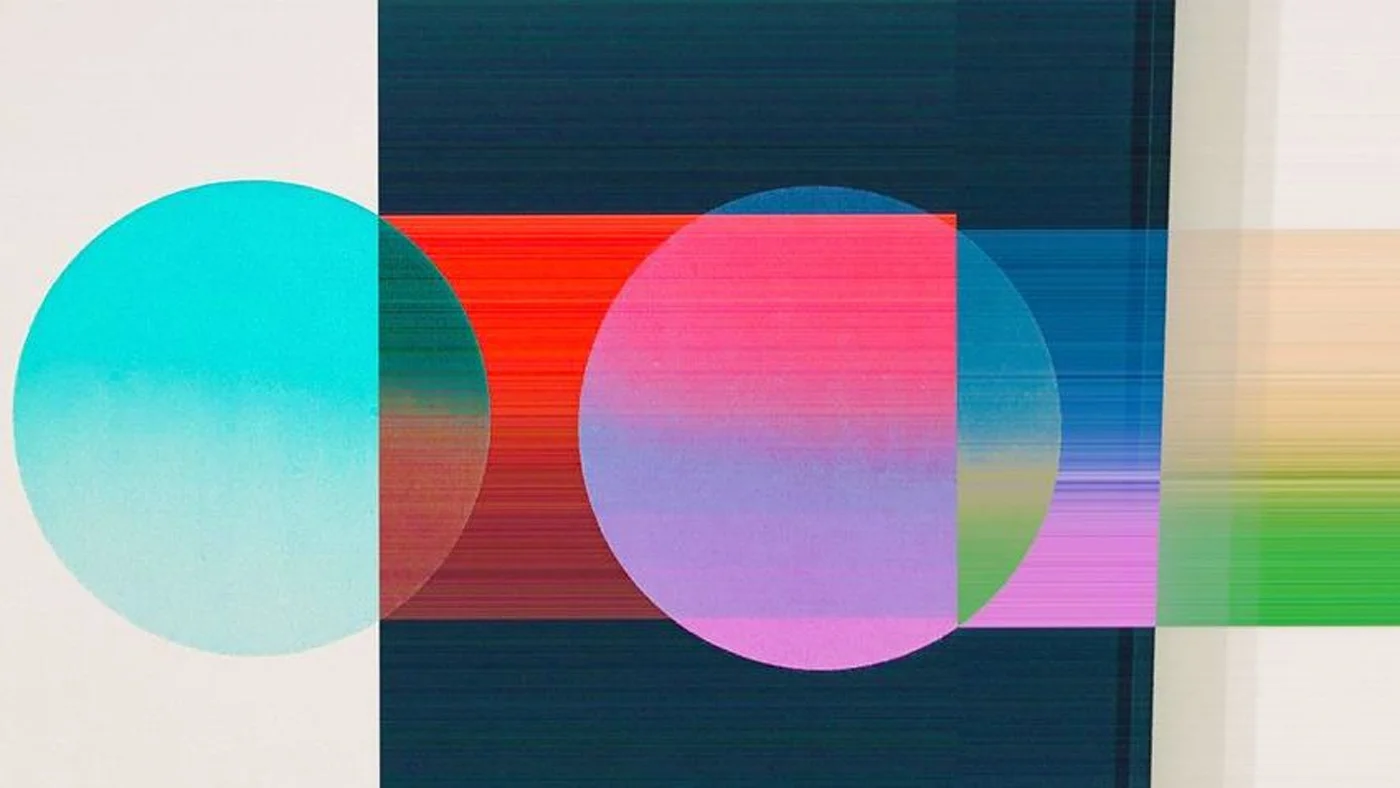Sarah Svetlana: секретный сад [secret garden]
We’ve had our eye on LA-based painter Sarah Svetlana since first seeing her work around our longtime favorite spot ShockBoxx. This time around, she’s taking over the entire gallery with her upcoming solo show секретный сад [secret garden], opening at ShockBoxx this Saturday, March 7th from 6:00-9:00pm. Secret Garden depicts the narrative of the artist connecting with herself through processing a traumatic childhood as a Russian child assimilating in America. The series, featuring Sarah’s signature flower motifs, are a window into her diary, and the works continue many themes displayed in her first solo show Mama, which exhibited at TAG Gallery last fall. We visited Sarah’s serene studio in Pasadena to chat all about the show.
Asymmetric Magazine: Tell us the story behind your upcoming solo show at ShockBoxx.
Sarah Svetlana: It’s called Secret Garden, and I specifically wrote it in Russian first: секретный сад. I’ve been working on the show for the last six months, and at first, I didn’t know what I was going to be doing. I just knew I wanted to produce brand new work for the show, and I wanted it to be organic. I started drawing my doodles of very child-like flowers. I just kept going over them over and over again, and I couldn’t stop. I usually hate that shape, because to me, it’s almost too child-like or too ‘doodly’. But then I started incorporating a lot more structure into my work. There are bold shapes and more straight lines than I’ve ever used before. I combined the child-like doodles with structural squares and very defined shapes. When I started building on that, I realized I was combining everything I’ve learned in the past few years. My work is totally based on my identity and the assimilation of when I first moved to the country. It represents that I’m still in that 4-year-old state. When you’re going through a traumatic experience and going through refugee camps, you’re so little that you don’t know what’s happening. You focus on the world around you: the lamps, the corners of the wall, all the details. You’re in your head so much. You don’t have control over any situation at that point, so you’re just along for the ride. You become the observer. I love decay on walls. I love color distortion and fading over time. Graffiti removal is my favorite thing. When I’m driving down the freeway, and I see squares of where the graffiti used to be, and it’s kind of the same shade as the wall, but it’s not. I’m obsessed with that. It’s not just the aesthetic of that, but the fact that it’s been there and it’s part of this history. It’s a footprint of what was once there. Now it’s gone, but there’s still evidence of it there. I started accepting my flower doodles as part of my history. I was trying to get through something, and I regressed back to a child-like state. So, I started allowing myself to doodle over the bold shapes, and I started to use it as a diary. Sometimes you can’t even see the doodles or they are made with a light pencil, but I know it’s there, and it became my secret journal. And since the doodles are mostly flowers, I started viewing it as a secret garden. Having it be in Russian was my way to try to connect with myself, since I feel so disconnected from it. I’ve never felt that I fit into the Jewish population because my family and I weren’t practicing Jews, and I never felt that I fit in with Russians because I’m Jewish. I came here at such a young age that I’ve always felt I was in my own world—not really connecting with any part of the world—just floating around and trying to fit in somewhere. So, this show is me trying so desperately to connect to who I am.
AM: Are you finding these works to be successful in making that connection?
SS: Absolutely. Even though I’m Russian, I often feel like a fraud around other Russians, and it’s so funny, I’ll immediately become very shy. These works are me allowing myself to be who I am without feeling that way. I’ve also really learned my process through this. I never had the opportunity to develop such a large body of work before. So, I had to figure out a process because I wanted it to be all cohesive. I’ve learned to trust in myself, let things go and be okay with imperfections. I love the imperfections in my work now, and that’s completely transferred into my real life, as well. I realized I am who I am, and that’s okay. I don’t need to fit into a category or question it. I’m Russian, I’m Jewish, I’m American. It’s taught me to trust in the universe and be patient with myself.
AM: You write words on some of your paintings, and some of them are hidden or layered. Are there any consistent themes in what’s written on the pieces?
SS: Yes. Sometimes the words are me talking to my mom. Sometimes I’m talking to myself. Sometimes I’m talking to a lover. It’s my entire history. The consistency in all of my pieces is that there are so many layers in each piece. I used to get really anxious about starting a new piece, because I knew it would require a lot of layers, and I wanted to rush the process and skip those parts. But whenever I would do that, it never works out the way I want it to. I’m never satisfied, and it never feels like that’s not how it’s supposed to be. All of my pieces involve so many different layers—it’s a roller coaster. Just when I think I’m done, I’ll add another layer. I take where I am in the moment in my headspace, and I’m just a tool to document that. Whatever energy I have at the time, I just spill it on the canvas. I work on several pieces at a time, so I’m able to walk away from each one for awhile. And when I come back to a piece, I’m in a different headspace, and I’ll add a different color that represents that. In the end, you can see through all the different layers and hidden things. I’ll write words and then paint over them, but you can still see a portion of it; it’s still there. Each piece has a story and soul.
AM: How do you know when a piece is complete after all the layers?
SS: It tells me; it really does. Ninety percent of the time, I’ll think I’m done, and then I’ll go back in a few days and add one more line. I know it’s done when it becomes alive and I connect with it. The moment I can sigh and feel peace inside of me, I know it’s done. It talks to me, and I’ve learned to not force anything. Sometimes I’ll make a small mark, and I’ll want to hurry and fill the whole canvas, but that feels wrong. I’ve learned to listen to the canvas. Sometimes I’ll be staring at a painting for two hours at a time, just waiting for the canvas to talk to me. I’ll really connect with it, and all of the sudden, it just tells me, and I feel where certain marks need to go. Even with the colors I use, I see the colors before I pick them and paint them. I really connect with colors, which is so funny to me, because I love black and wearing really simple, muted things. But when it comes to my work, I love color. It comes from being a depressed kid and dealing with depression and bipolar disorder. I see color a little differently. When I see a color, I think about what colors go in that to make it; I see the other colors in it. And that makes me happy. So, when the canvas tells me to use a certain color, I never question whether or not it will go well. I trust it, and it always just works.
AM: Do you have any favorite colors or palettes to use? We notice a lot of pink in your work.
SS: There’s a particular pink I call ‘nipple pink’. It’s a really soft pink, and there’s something about it that I’m super connected with. I could stare at it all day. When I first started painting, it was all black underneath, and I’d put really bright colors over it. I’ve moved on to less dark colors under all the layers, but black and white will always be a palette that I like to pair with the pink. Some of my pieces have colorful polka dots, and those come from remembering my grandma’s outfits and the patterns that were popular in Russia. I’ve been told to paint with blues because blues sell. I tried to do that, but I got so sick of blues. It’s one thing if I wanted to paint with blues for myself, but I didn’t and had someone telling me to do that. So, I started noticing that my chosen colors are also me rebelling against that. People told me not to use greens if I want my work to sell, so I put a lot more green in my work. I just love the contrast against the pink. But in general, I just go with my gut, and it usually leads me to pinks.
People told me not to use greens if I want my work to sell, so I put a lot more green in my work.
AM: Is there a piece in the show you would say you resonate with more than others?
SS: Definitely the bigger ones just because there’s more to them. But recently, I’ve been thrifting old crappy wooden frames that still have a picture or art in them. I’ll take the glass out and paint over everything—frame included. Those pieces almost end up being sculptures because there are so many layers and chunks of paint. These have become my favorite. They’re so small, but they’re so intricate. They are a little simpler and more minimal, and minimalism is really scary to me, so these pieces have taught me to trust the process even more.
AM: You were talking about how each of your pieces has its own history because of all the layers, and the thrifted pieces add a whole new level of history: the artwork itself and previous owners. That’s such a cool thing to build off of.
SS: Totally, and those pieces are definitely made with that intention. I love thrifting. Even my clothes—I never call them ‘clothes’; I call them ‘pieces’. Each thrifted clothing item or piece of jewelry really is a ‘piece’. It has a history, and it carries a certain energy.
AM: Whenever I thrift my clothes, I always wonder if someone fell in love in that article of clothing or got broken up with in this shirt or if any major life milestones happened while they were wearing it.
SS: It’s so cool, and it connects you to humanity. Especially really vintage pieces. I love buying vintage clutches and looking to see if anything is left inside like a little comb or a matchbook from somewhere. That’s why I love buying thrift store art. It’s even better if it’s kitschy. I think about how someone had the piece hanging in their kitchen at one point and loved it.
AM: How did you start painting on the thrifted pieces and what was the first found object you painted on?
SS: I never like buying anything new, so thrifting in general is very natural to me. I used to thrift little statues and figurines and paint over them, giving them faces and making them all creepy. The very first time was when I was very young, and I had one of a dancer girl who had her arm up. The arm broke off, and I painted it red to be bloody—I was very emo. So that was the first, and then, since I don’t have any rules, I’d just paint over everything. When I first started painting, I had no training whatsoever. I took a couple of art classes, but I don’t listen very well in class. I need to be hands on. So, I never knew any art rules, and I didn’t really care. Painting over something felt natural and fun to me.
AM: You did a solo show called Mama at Tag Gallery last year. How does this new series compare to that?
SS: That show definitely propelled me to do this show. That was my first solo show, so I feel a lot more confident with this show. It got me in the headspace to create this series. Mama was not only a reference to my mom but to my home and what ‘home’ meant. This show is all about the journey in connecting with that feeling. That was the forward, and this is the actual story—my secret journal.
Sarah Svetlana with works from her upcoming solo show секретный сад [secret garden]
AM: We love to ask everyone, what music are you into right now?
SS: I listen to a lot of 70’s music, and I’ve been listening to outlaw country recently. I don’t know where it came from—probably from me really liking Russian outlaw music. They outlawed the majority of music in the Soviet Union. But I listen to a lot of different things: 2pac, ABBA, Kenrick Lamar, Sturgill Simpson.
AM: You also curated a female art show Powerhouse last year and have been the judge on a panel in various shows. Can you speak to that a bit?
SS: I love all art—not just my own. I love seeing other people’s work and learning about their processes. Whenever I’m given the opportunity, I love to curate. I often get stuck in my own world, especially on social media. My Instagram feed is only what I know about and like because why would I follow something I don’t like? So, it’s nice to step outside of that and see things I don’t even know exist. We all inspire each other, and it’s so cool to form those different connections.
AM: What’s next for you after this show?
SS: I would love to take on a residency next and get out of LA to make some new work. My work is so dependent on where I am geographically. I paint a lot of my work on the ground, so it would be cool to make work somewhere else and let it pick up new textures from the environment and see what happens.

![Sarah Svetlana: секретный сад [secret garden]](https://images.squarespace-cdn.com/content/v1/52d6fff3e4b0e230ac8adfd6/1583218063659-FPF4PYYIYZ48QIG0ROHR/ss_sg_fb.jpg)

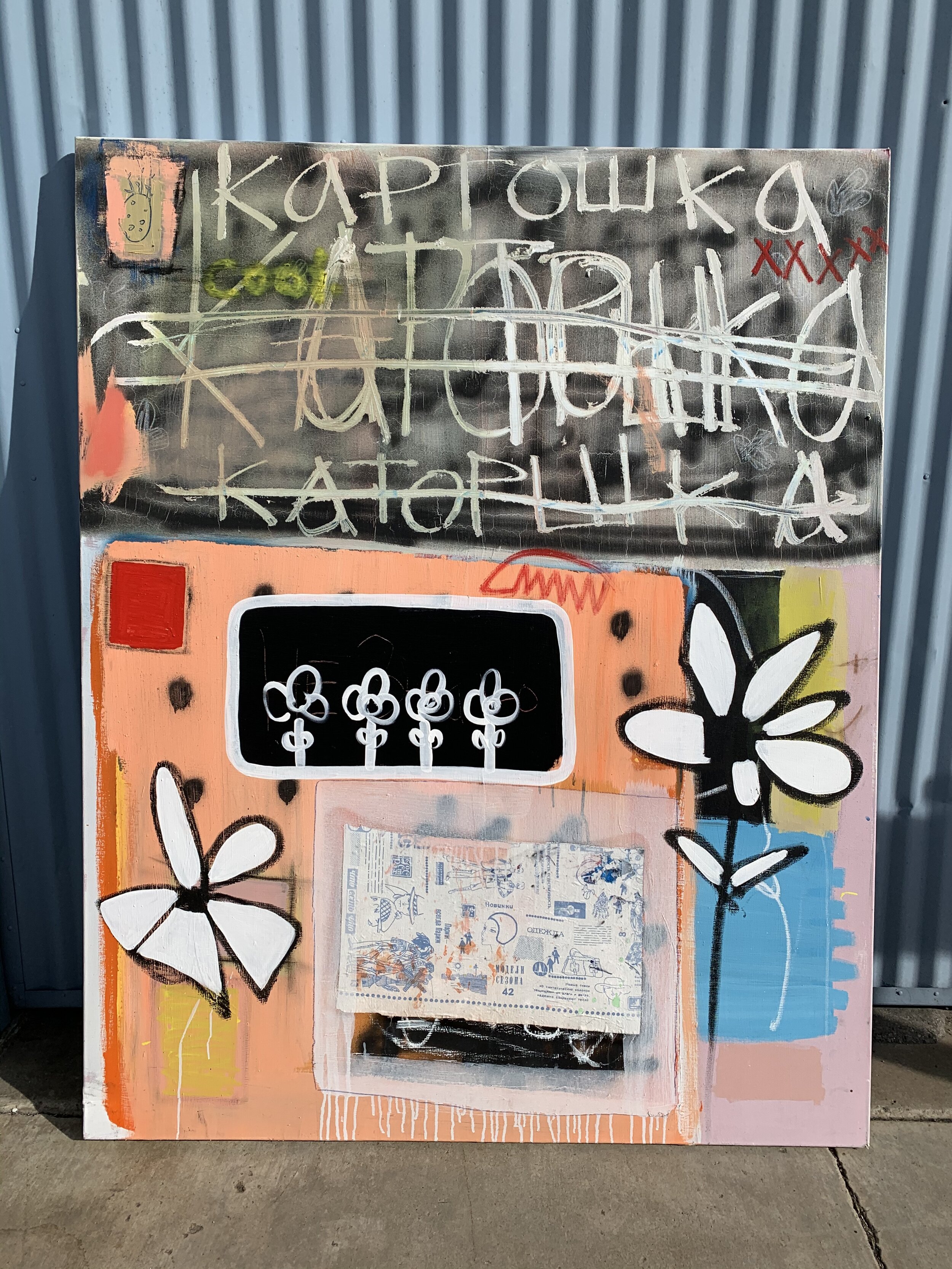
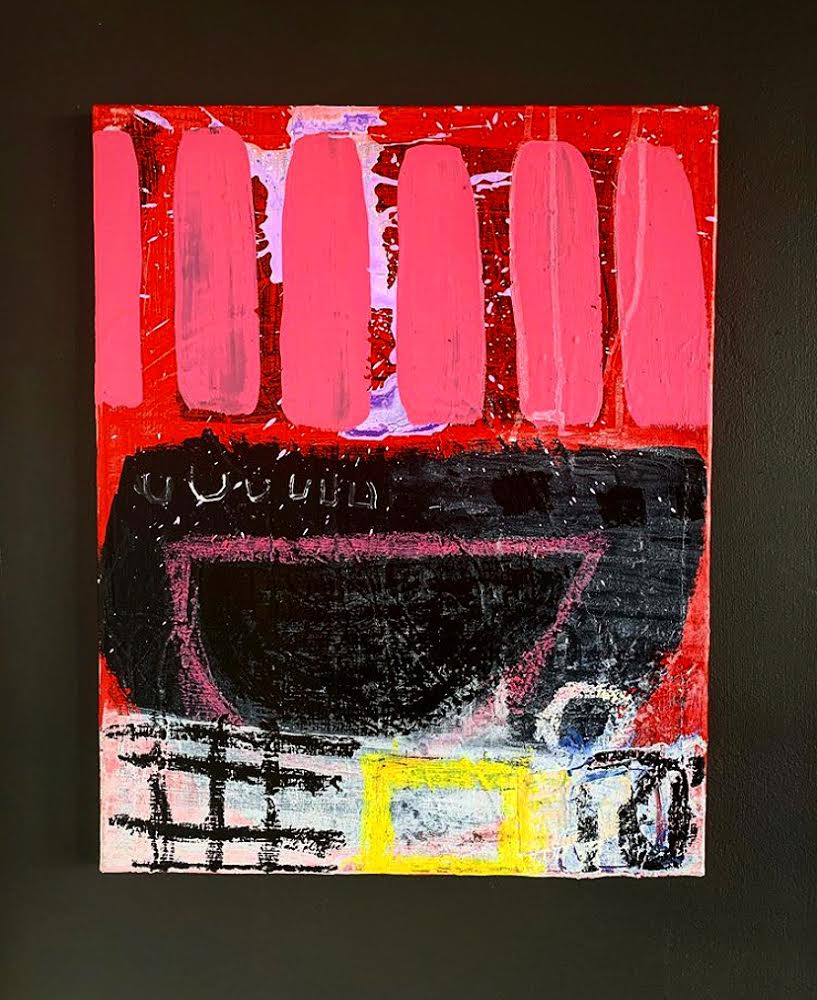
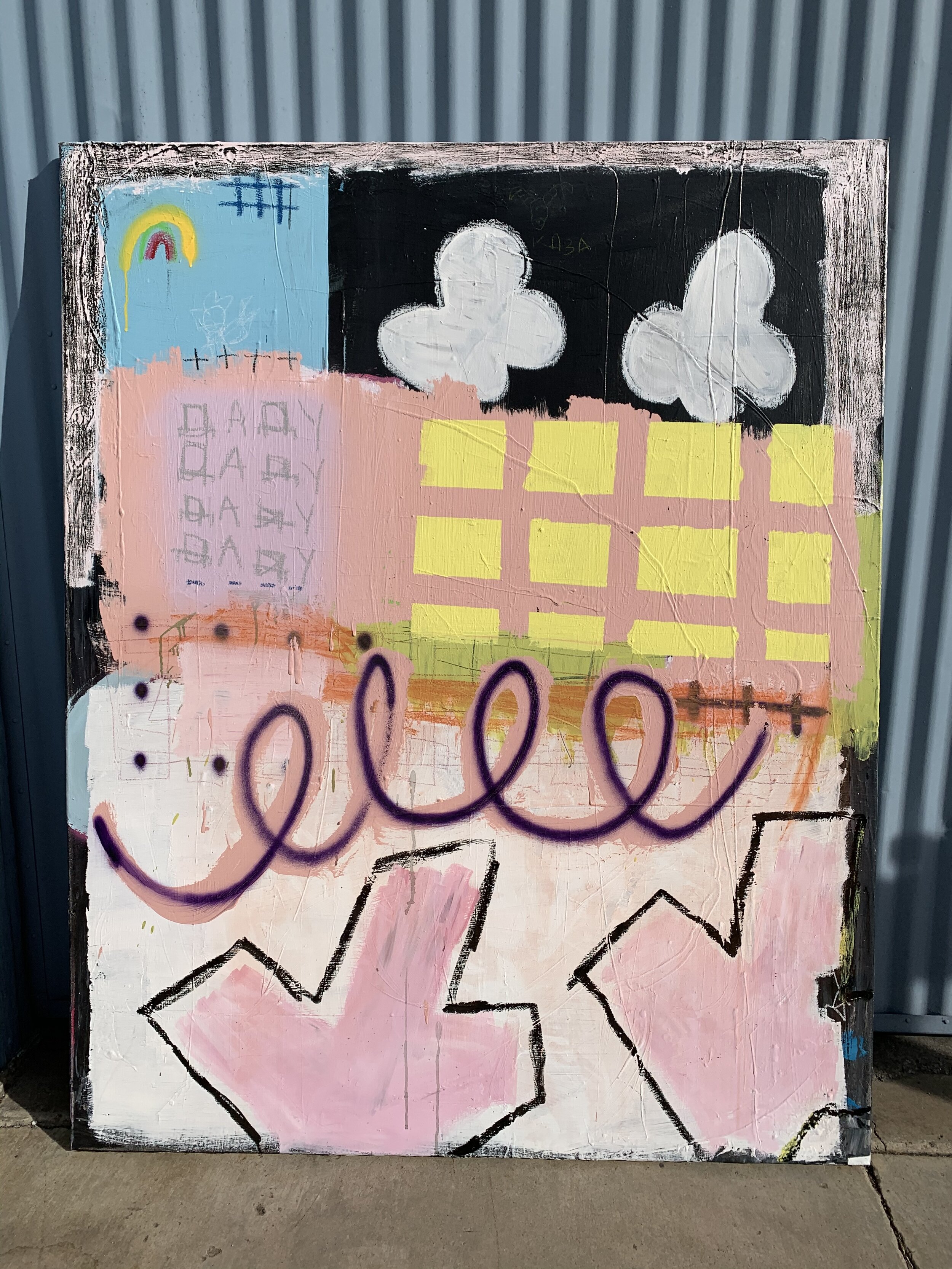
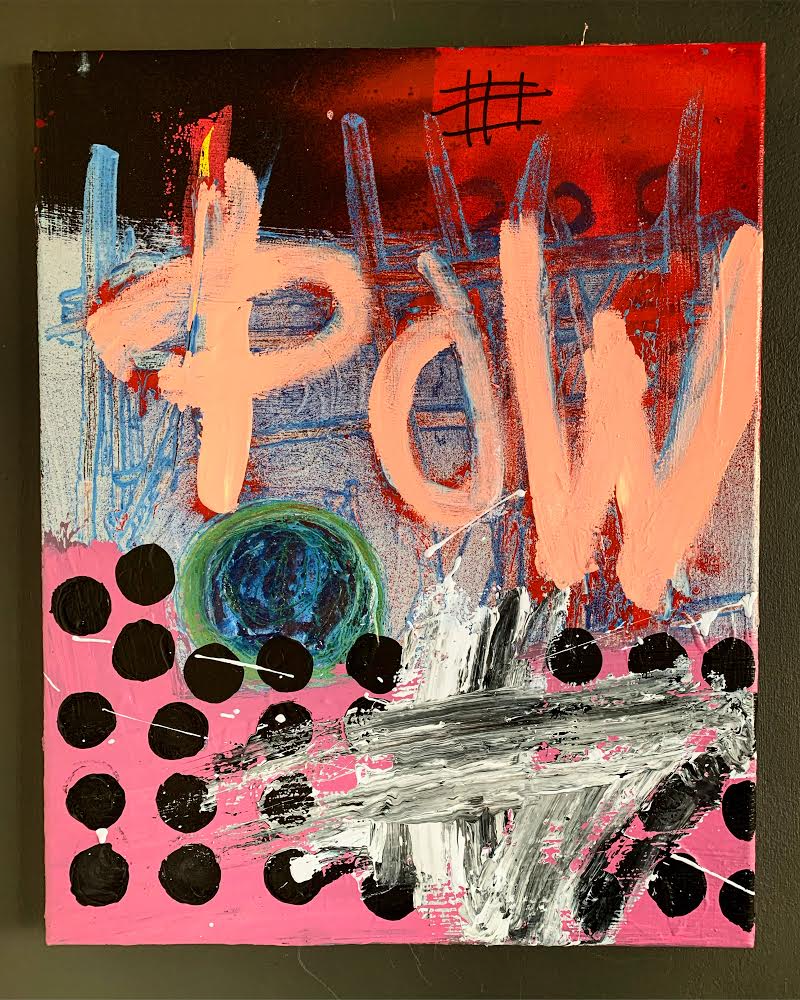
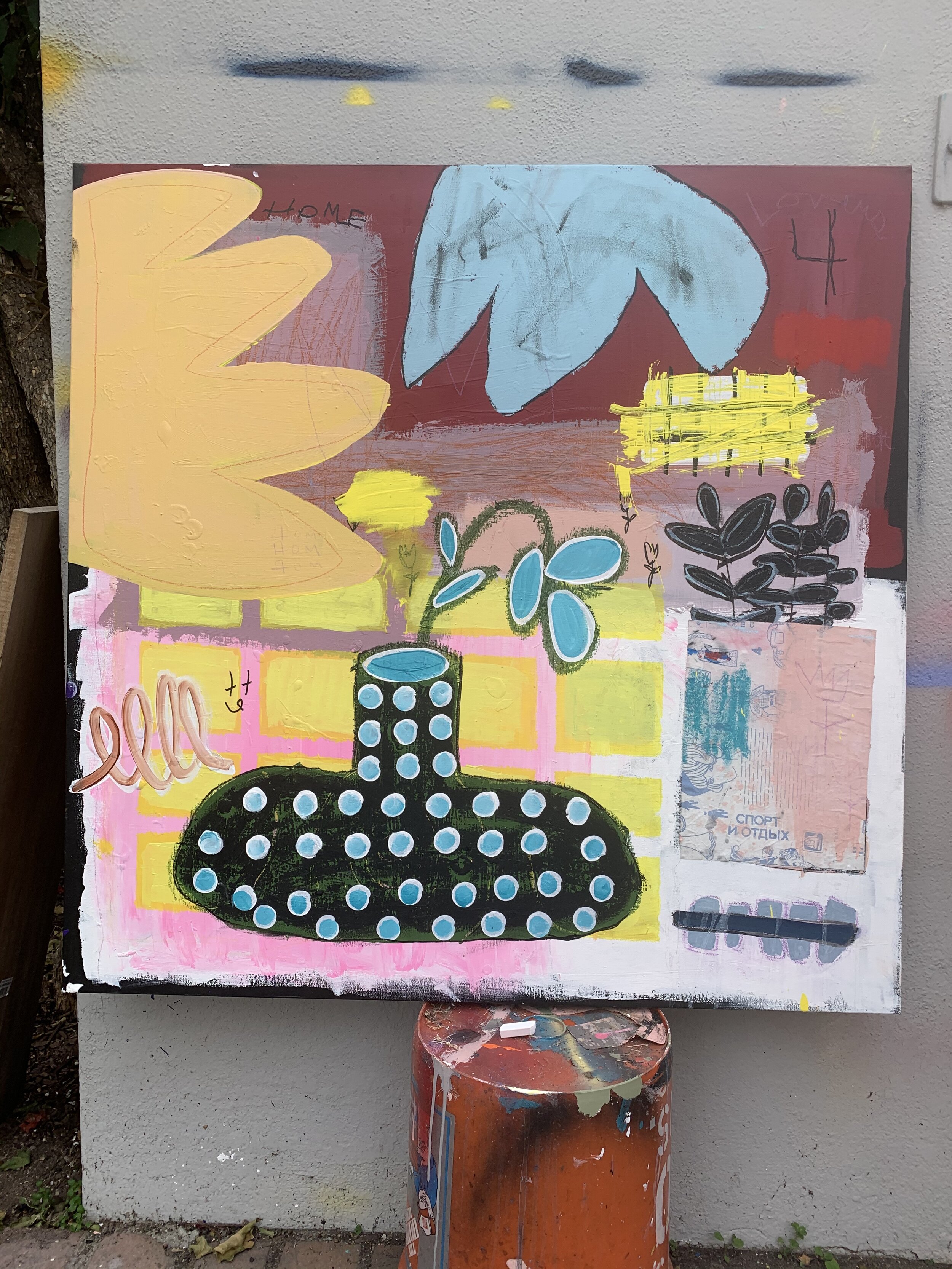
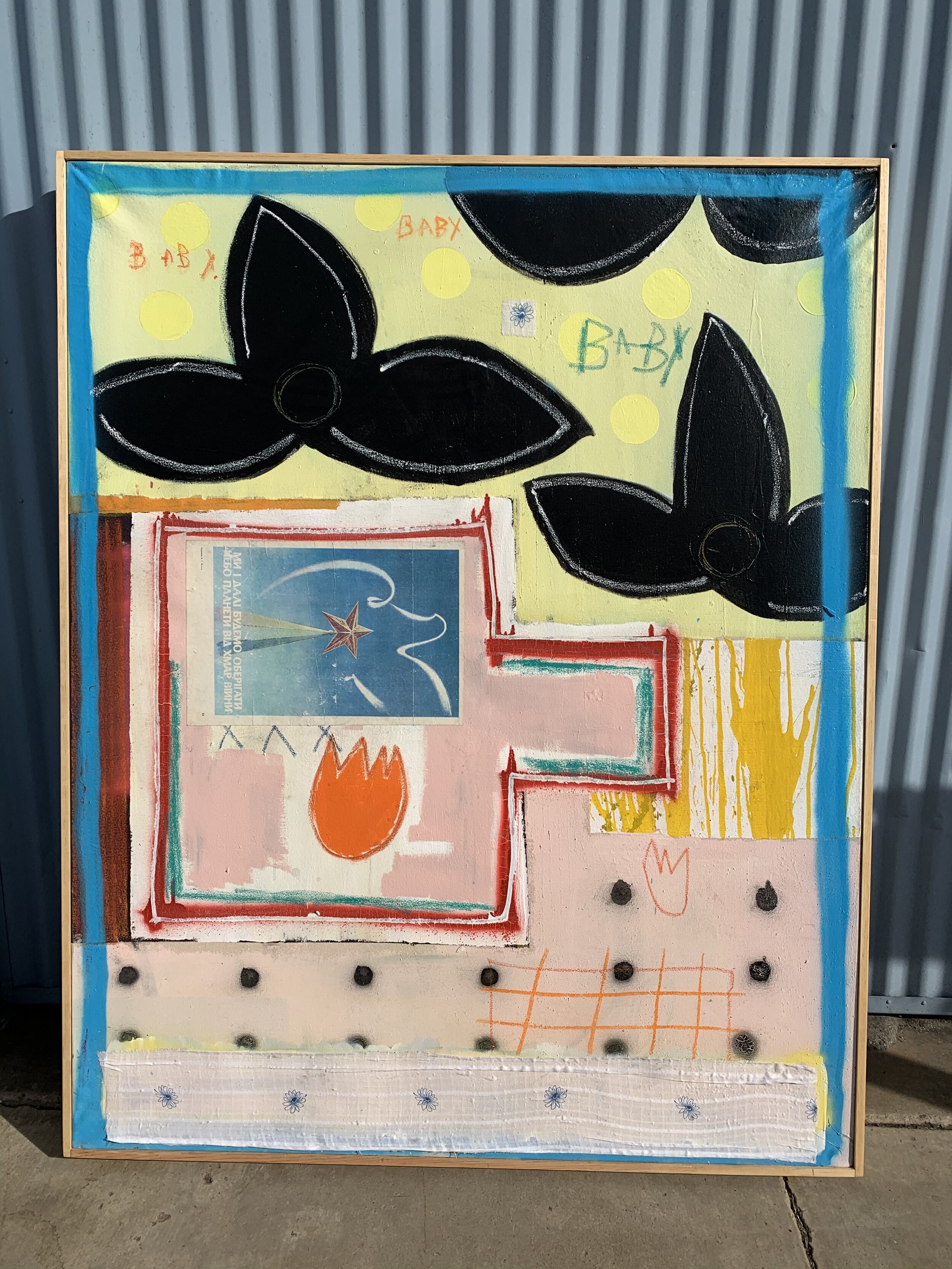

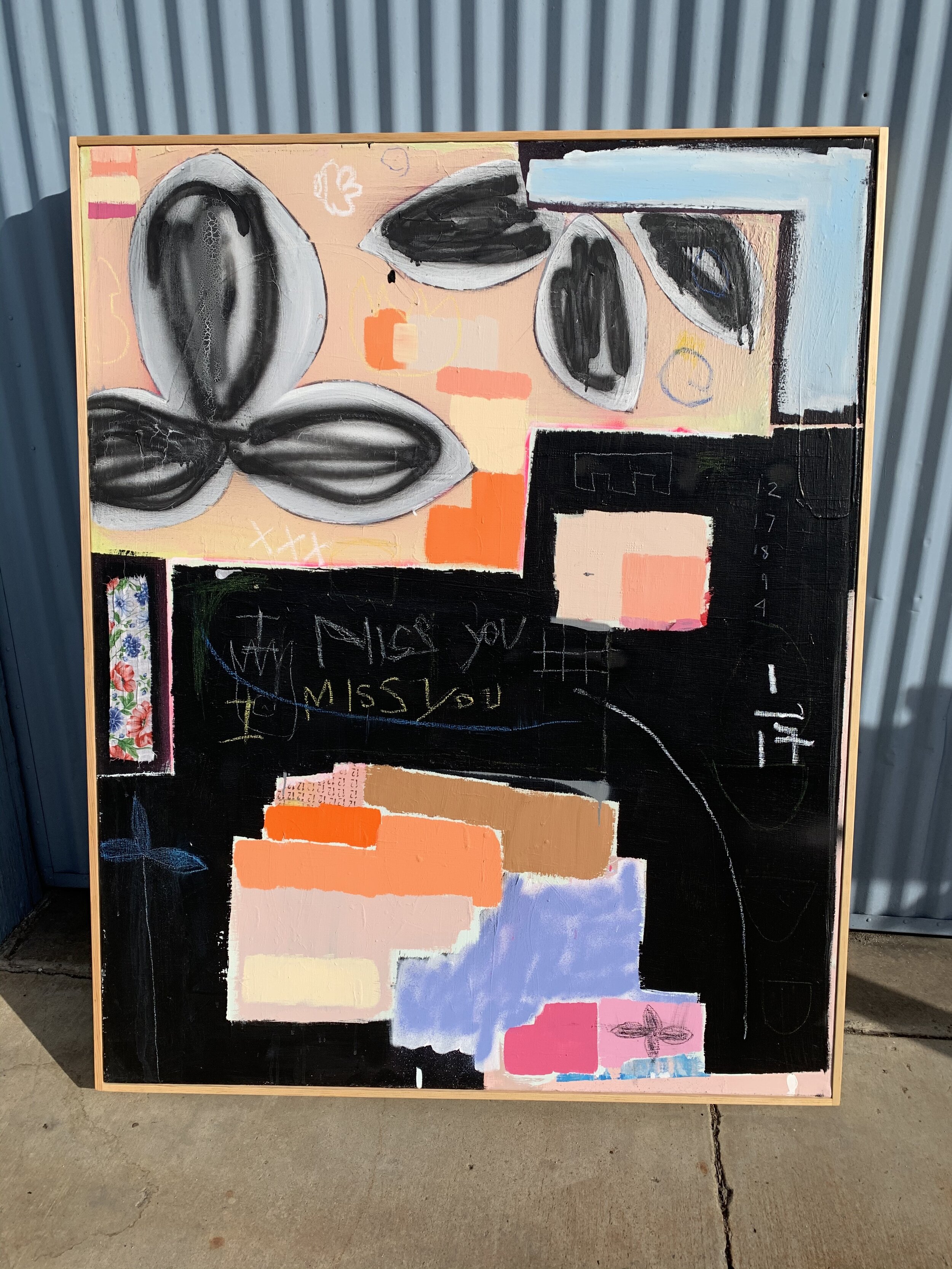
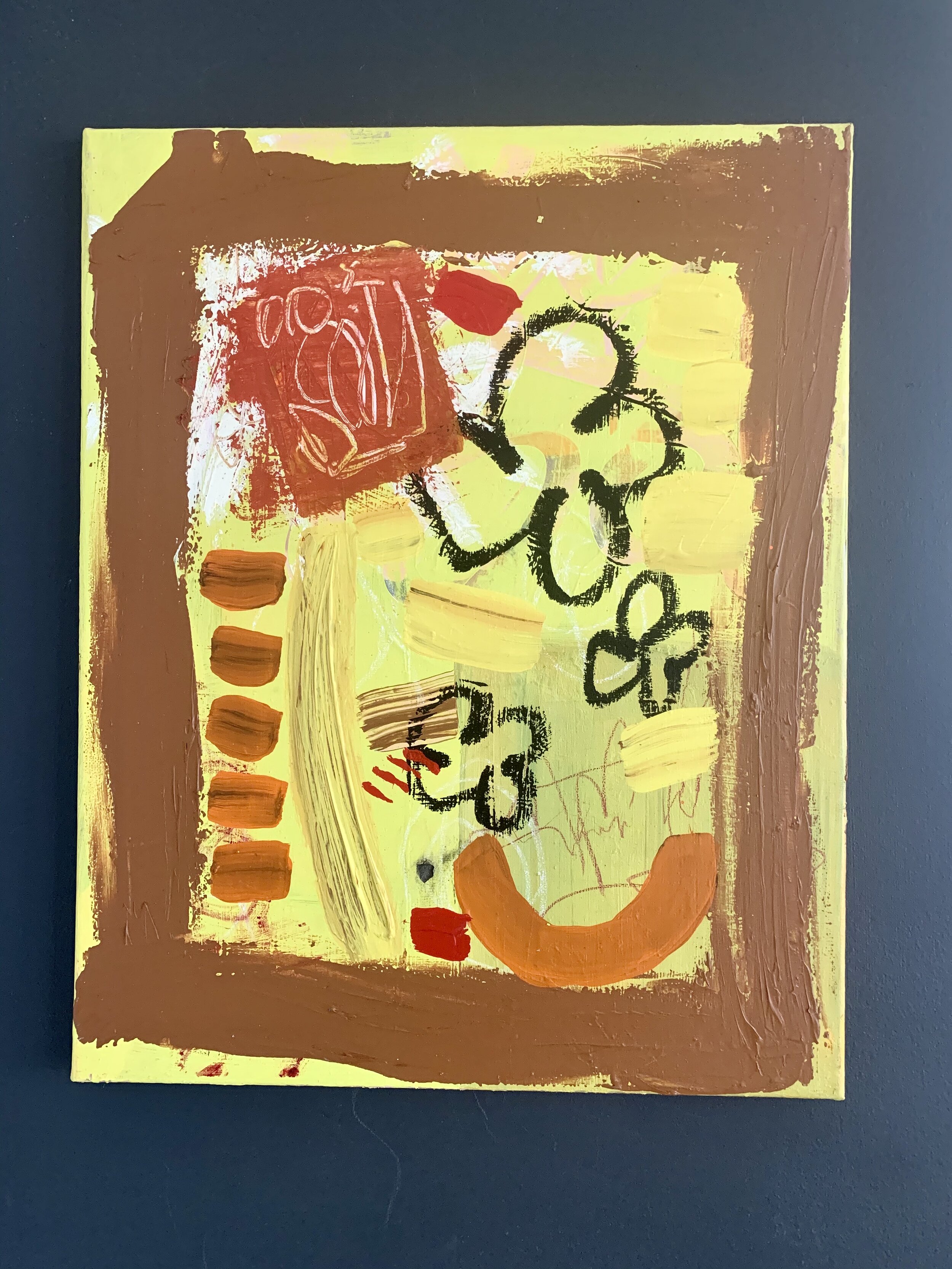

![Sarah Svetlana with works from her upcoming solo show секретный сад [secret garden]](https://images.squarespace-cdn.com/content/v1/52d6fff3e4b0e230ac8adfd6/1583216130491-DRWUZTWFDHNRRITW3O01/ss_secretgarden.jpg)

